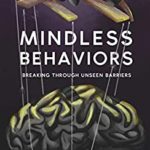Virtual Reality (VR) has rapidly emerged as a groundbreaking technology, revolutionizing various industries. One of the most promising and transformative applications of VR is in the field of education. By providing immersive learning experiences, VR has the potential to redefine the way students engage with educational content, making it more engaging, interactive, and effective.
Immersive Learning Environments
Traditional classrooms often struggle to captivate the attention of students, leading to disengagement and limited retention of information. Virtual Reality offers a solution by creating immersive learning environments that transport students to different places, eras, or scenarios. Whether exploring the ancient ruins of Machu Picchu or diving into the depths of the ocean, VR allows students to experience firsthand what they are learning, making education more memorable and meaningful.
Enhanced Engagement and Interactivity
One of the key advantages of VR in education is the ability to foster higher levels of engagement and interactivity. Instead of passively absorbing information, students can actively participate in simulations and exercises, promoting a deeper understanding of the subject matter. For instance, in biology classes, students can take a virtual journey inside the human body, exploring organs and biological processes in a way that textbooks simply cannot replicate.
Tailored Learning Experiences
Every student learns differently, and VR technology enables educators to provide personalized and tailored learning experiences. Through adaptive VR programs, students can progress at their own pace, receive real-time feedback, and focus on areas where they need improvement. This individualized approach to education ensures that students of varying learning styles and abilities can thrive, breaking away from the one-size-fits-all model of traditional classrooms.
Overcoming Physical Barriers
Virtual Reality has the potential to eliminate geographical and financial barriers to education. Students from different parts of the world can connect in a shared virtual space, fostering cultural exchange and collaboration. Additionally, VR can bring educational experiences to underserved communities where physical resources and qualified educators may be lacking. By breaking down these barriers, VR democratizes access to quality education.
Real-world Simulations
Certain professions require hands-on training that is often challenging to replicate in a traditional classroom setting. VR provides a solution by offering realistic, real-world simulations for fields such as medicine, aviation, and engineering. Medical students, for example, can practice surgical procedures in a virtual operating room, honing their skills in a risk-free environment before entering an actual operating theater. This not only enhances practical skills but also boosts confidence and competence.
Addressing Different Learning Styles
Traditional teaching methods may not cater to all learning styles effectively. Some students are visual learners, while others benefit more from auditory or kinesthetic approaches. Virtual Reality accommodates these diverse learning styles by offering a multisensory experience. Students can see, hear, and interact with the content, creating a holistic learning environment that resonates with a broader range of individuals.
Challenges and Considerations
While Virtual Reality holds immense potential for transforming education, there are challenges that need to be addressed. The cost of VR equipment, development of quality content, and the need for teacher training are significant hurdles. Additionally, ensuring the ethical use of VR in education, safeguarding student privacy, and addressing potential health concerns are critical considerations that must be carefully navigated.
Conclusion
Virtual Reality is on the brink of revolutionizing education by providing immersive and interactive learning experiences. The potential benefits, including enhanced engagement, personalized learning, and real-world simulations, suggest that VR has the power to transform the educational landscape. As technology continues to advance and become more accessible, the integration of Virtual Reality into mainstream education holds the promise of creating a more engaging, inclusive, and effective learning environment for students worldwide.






